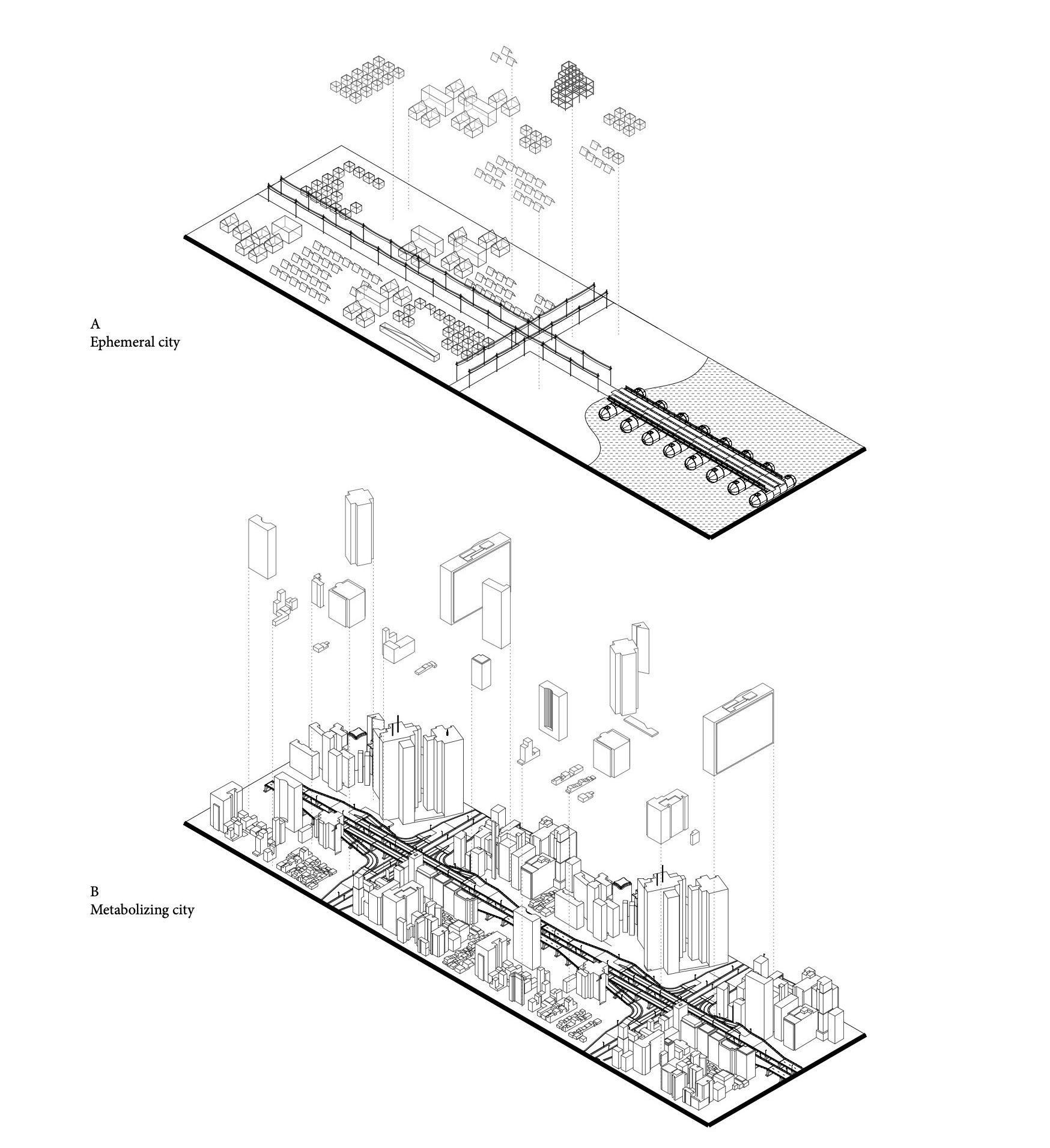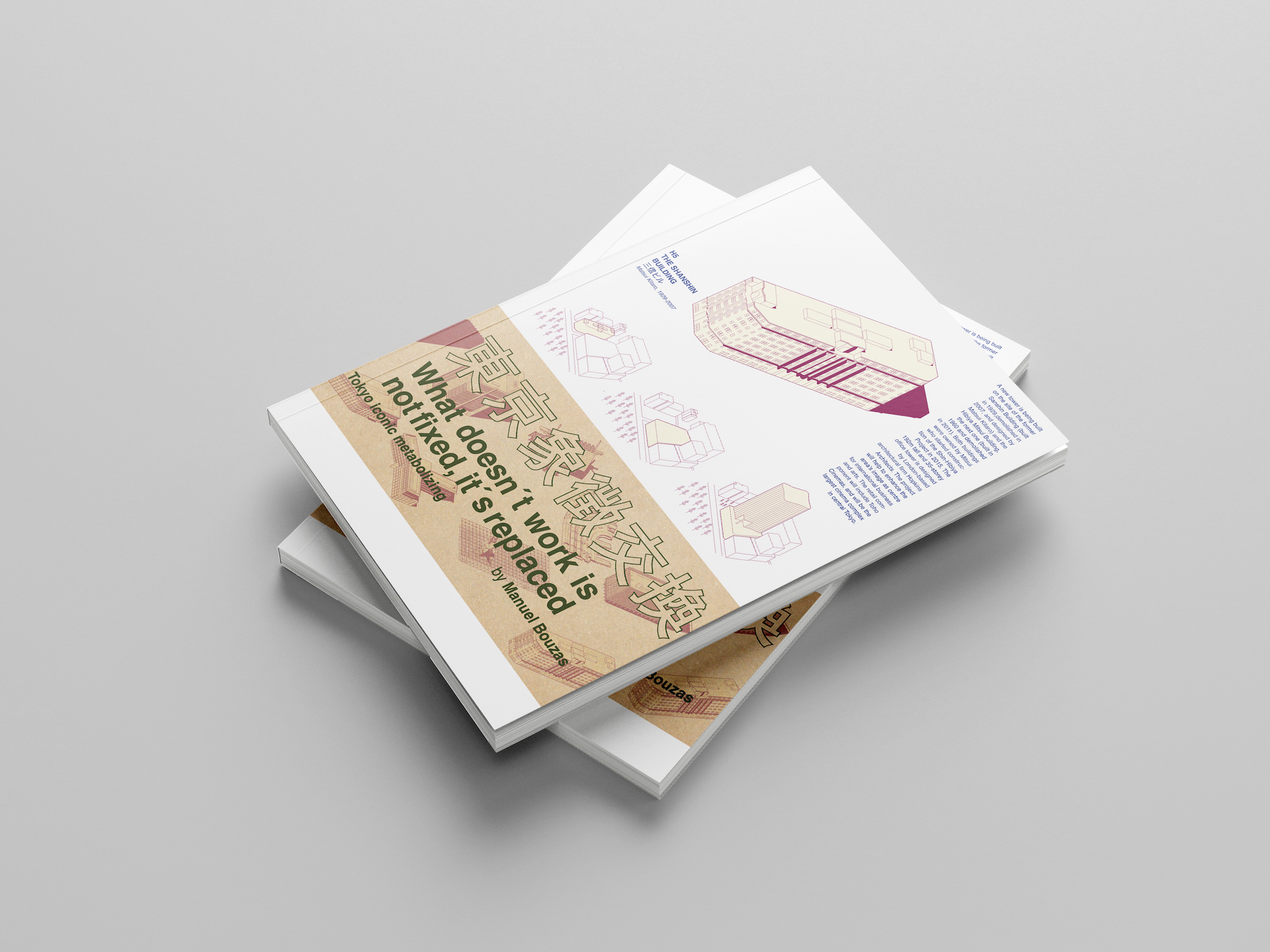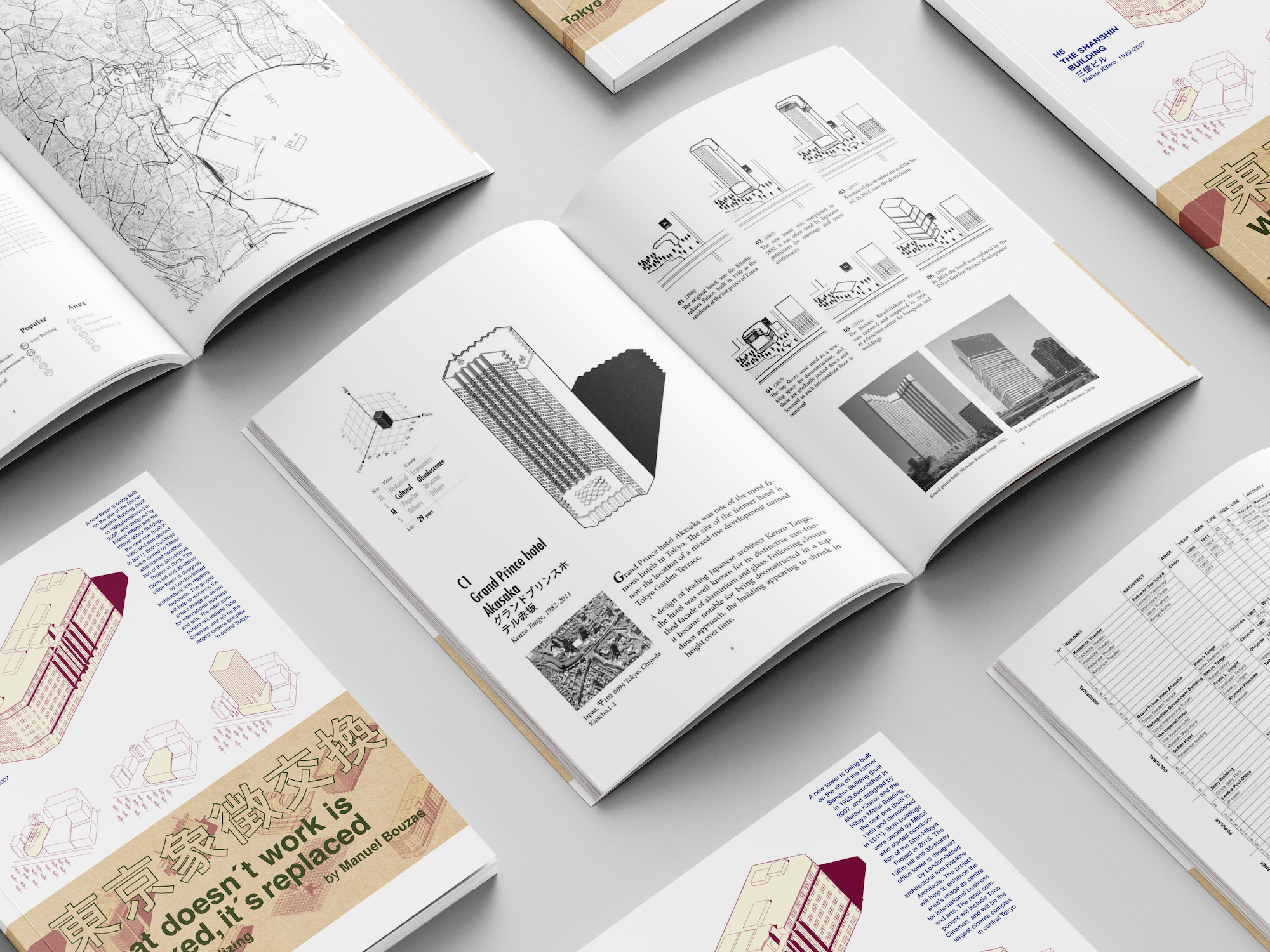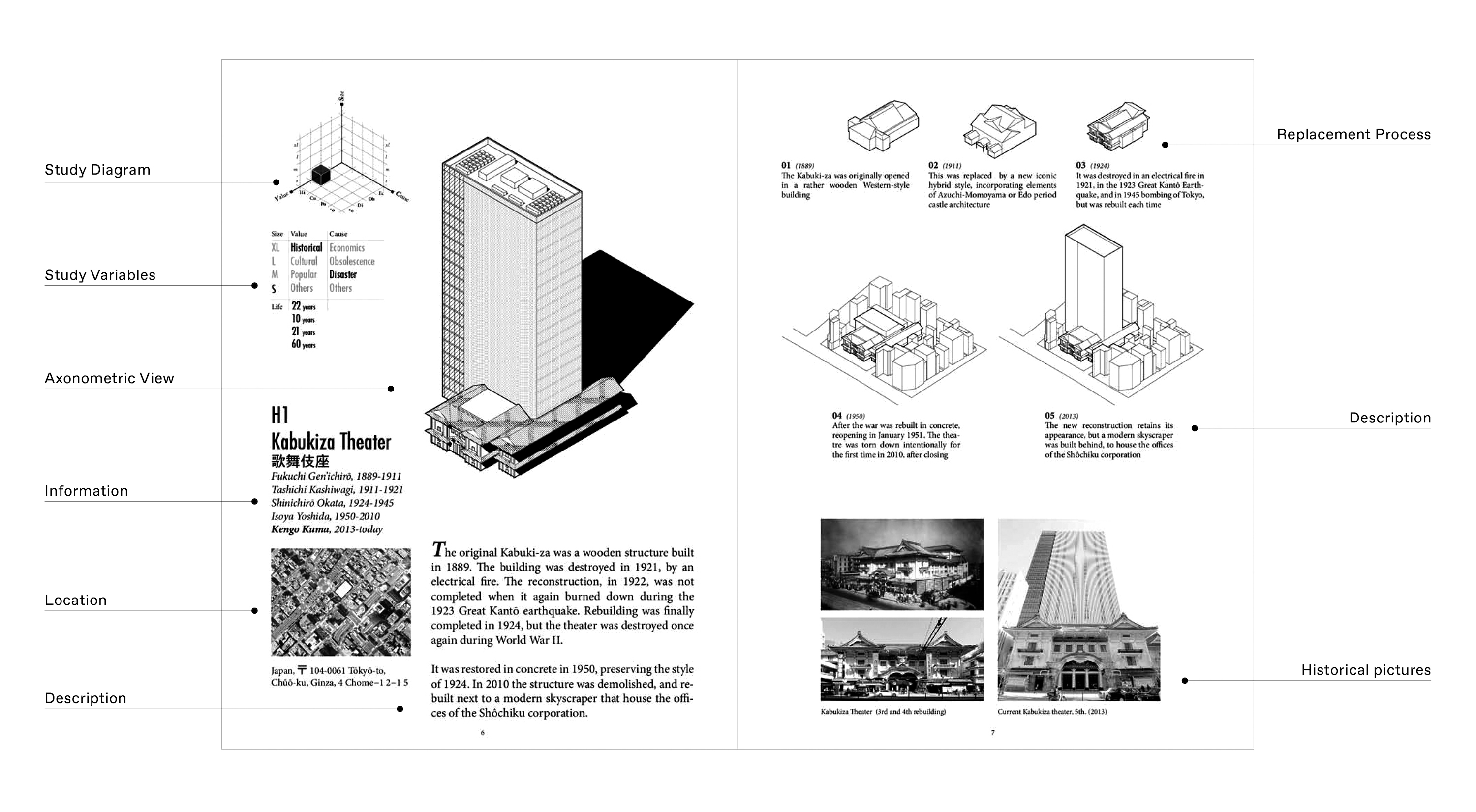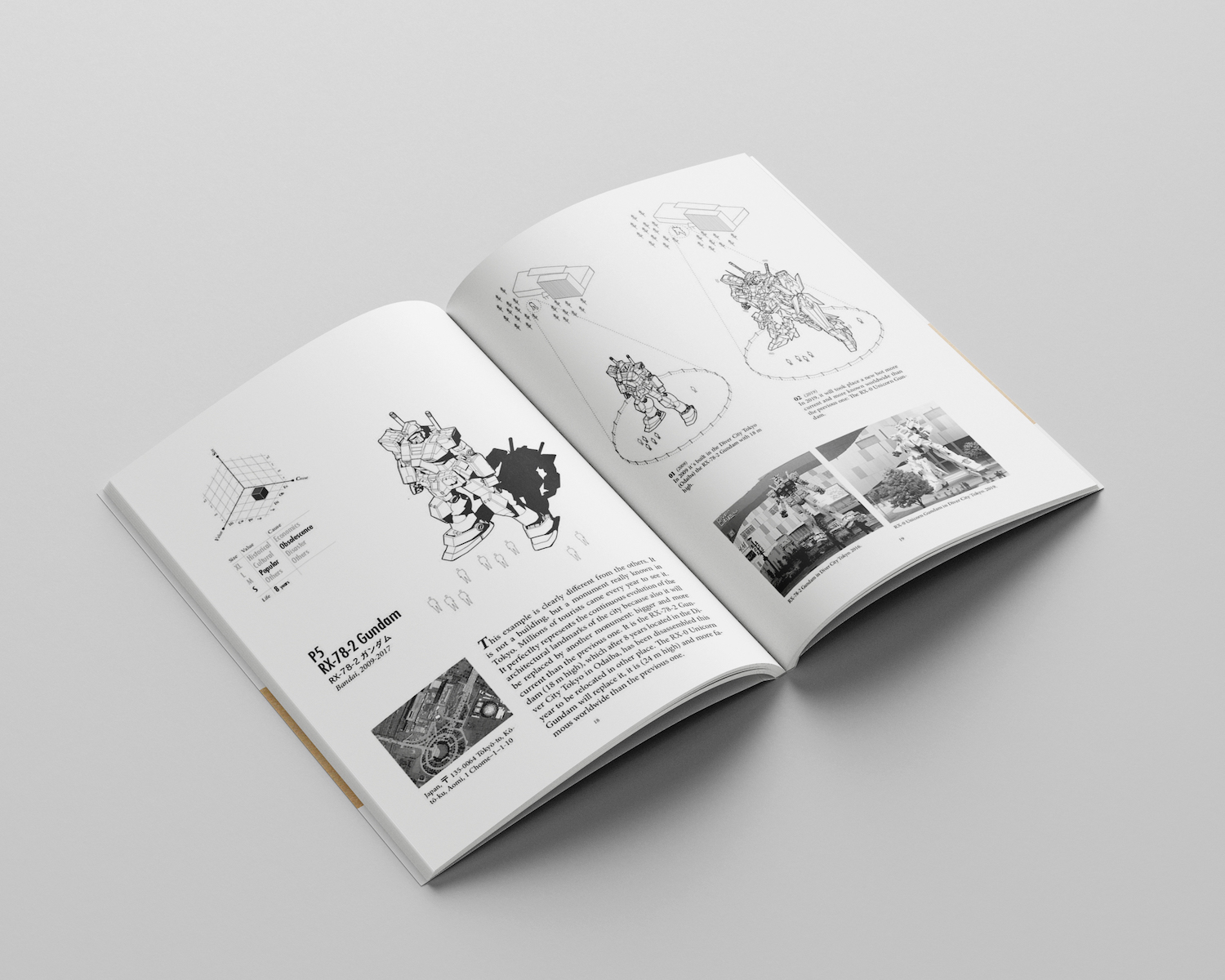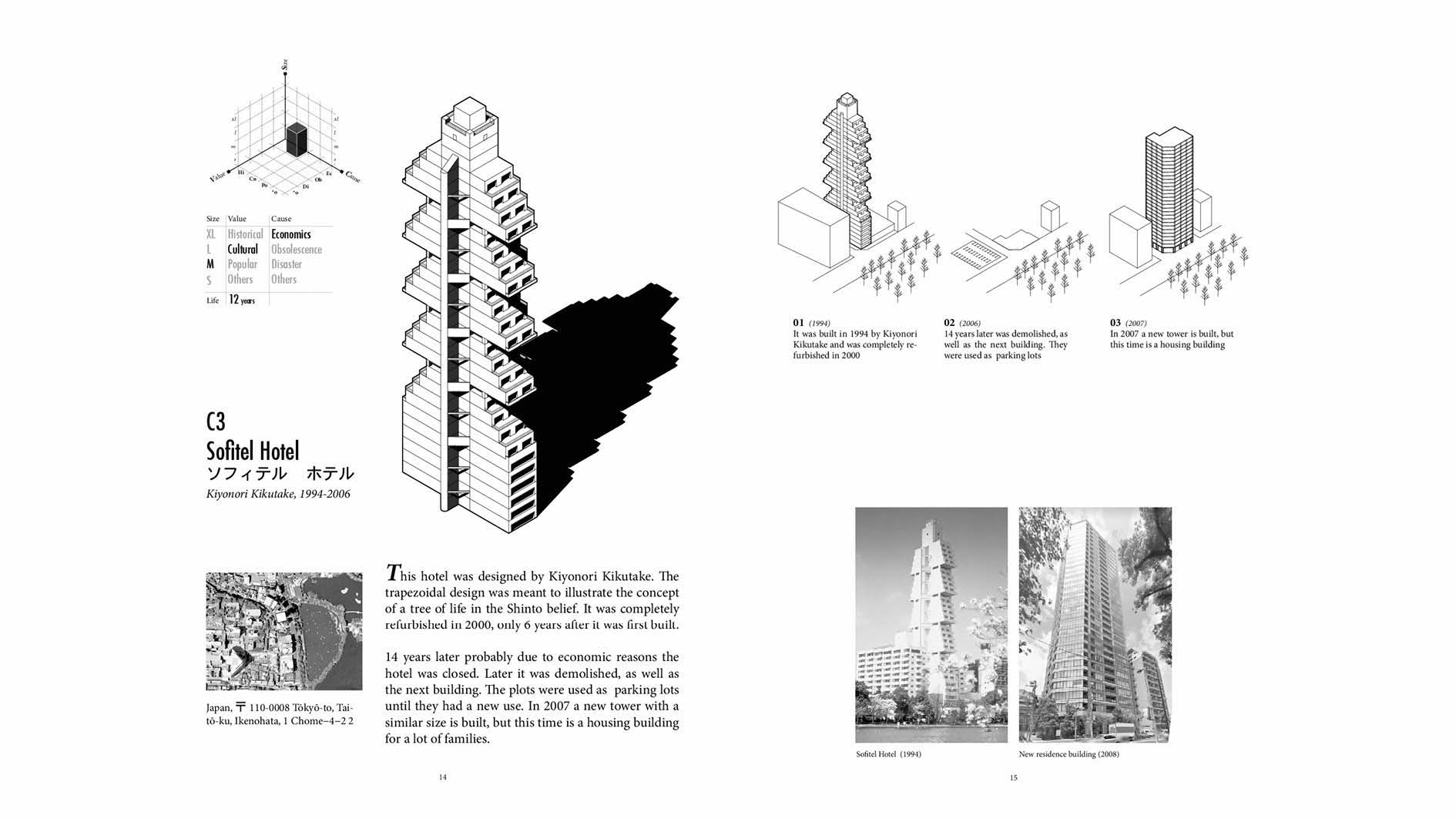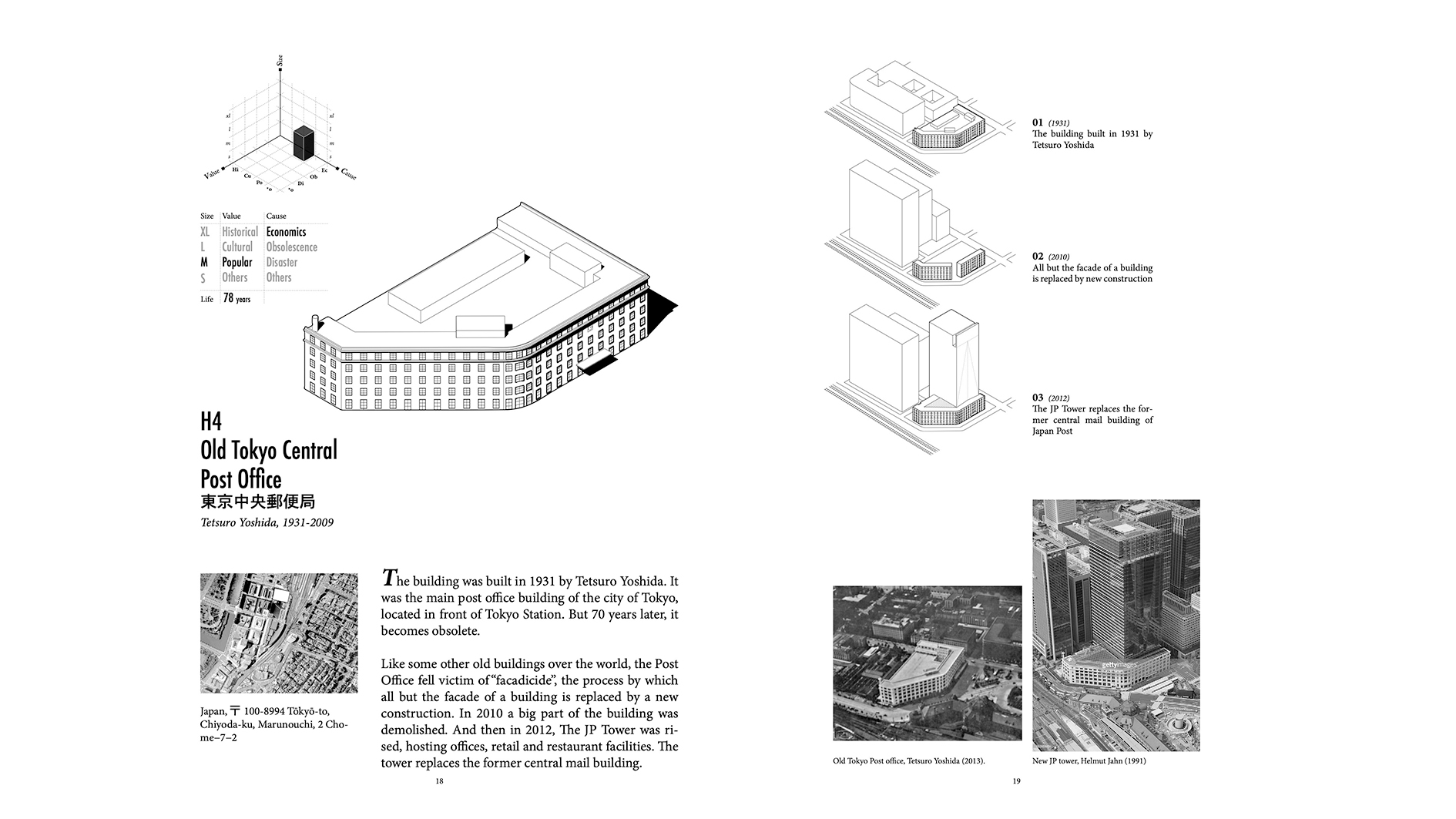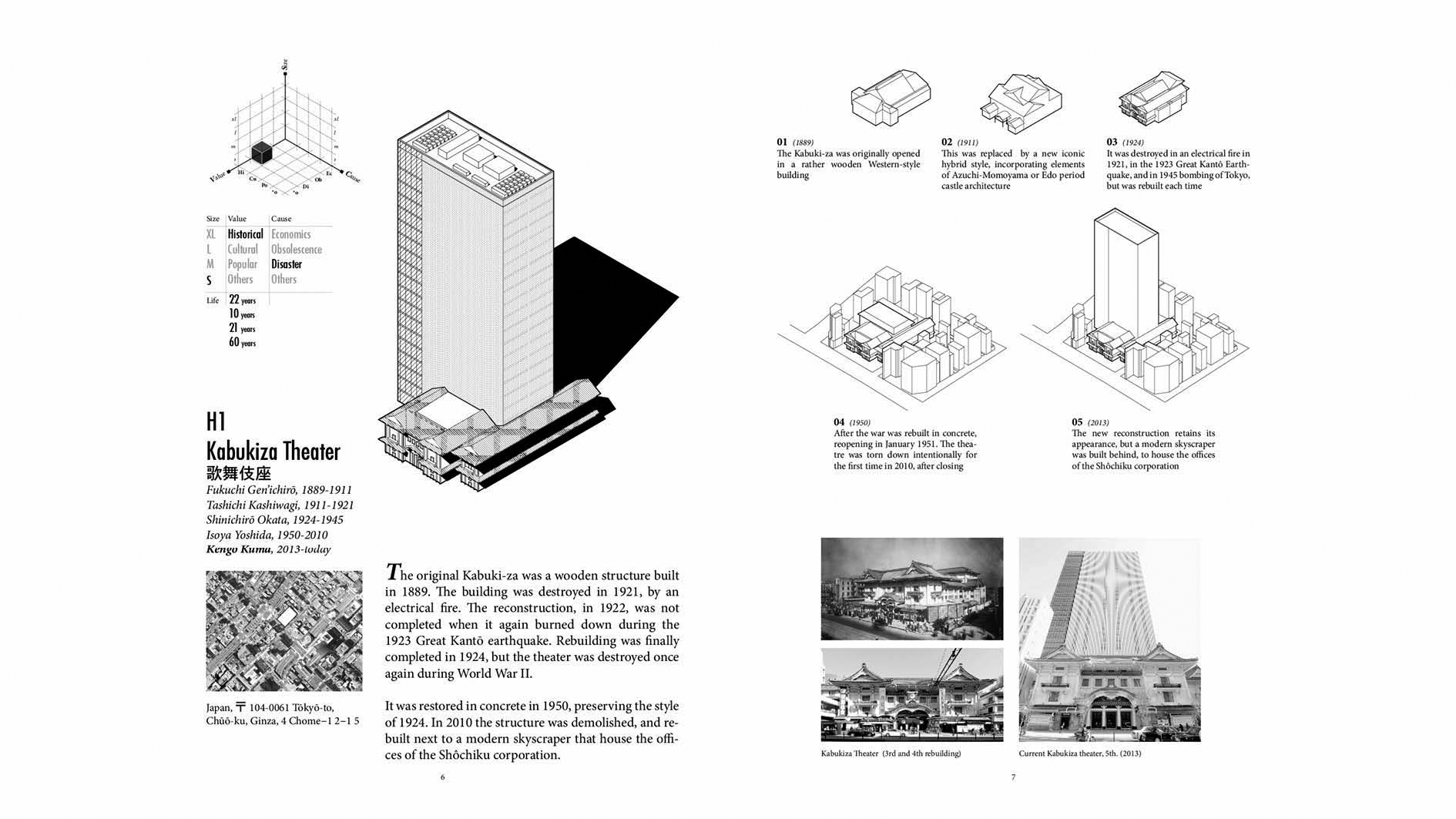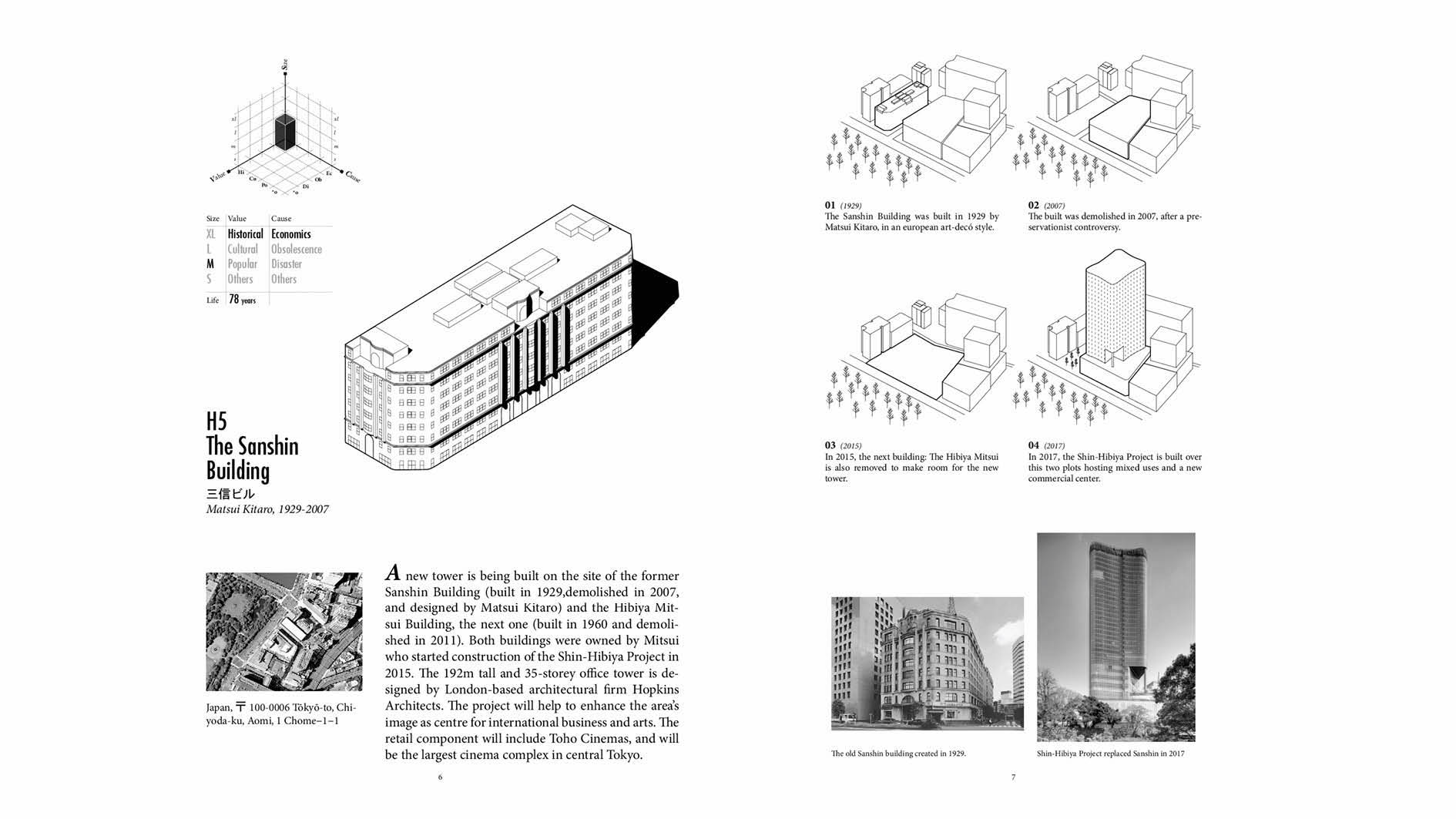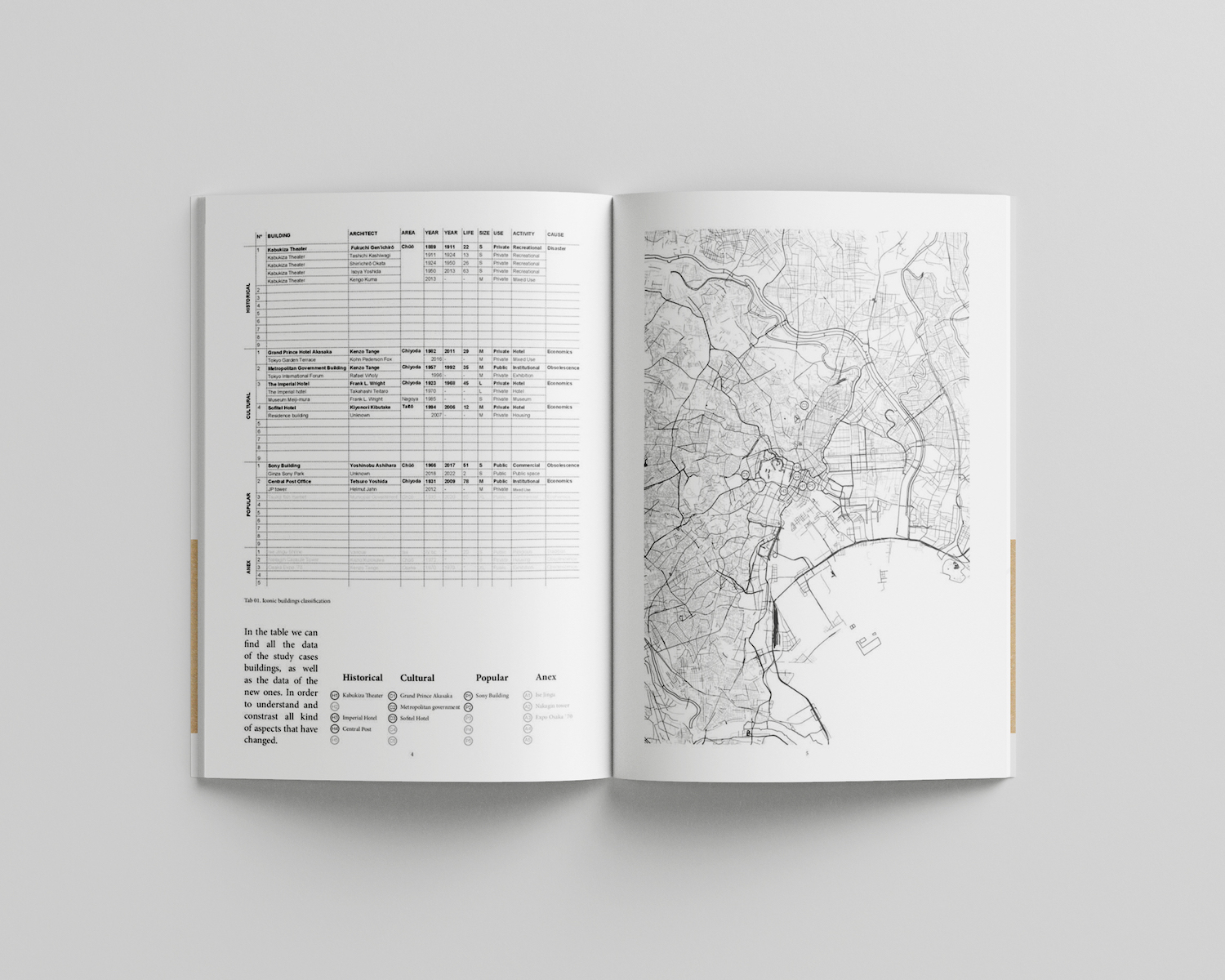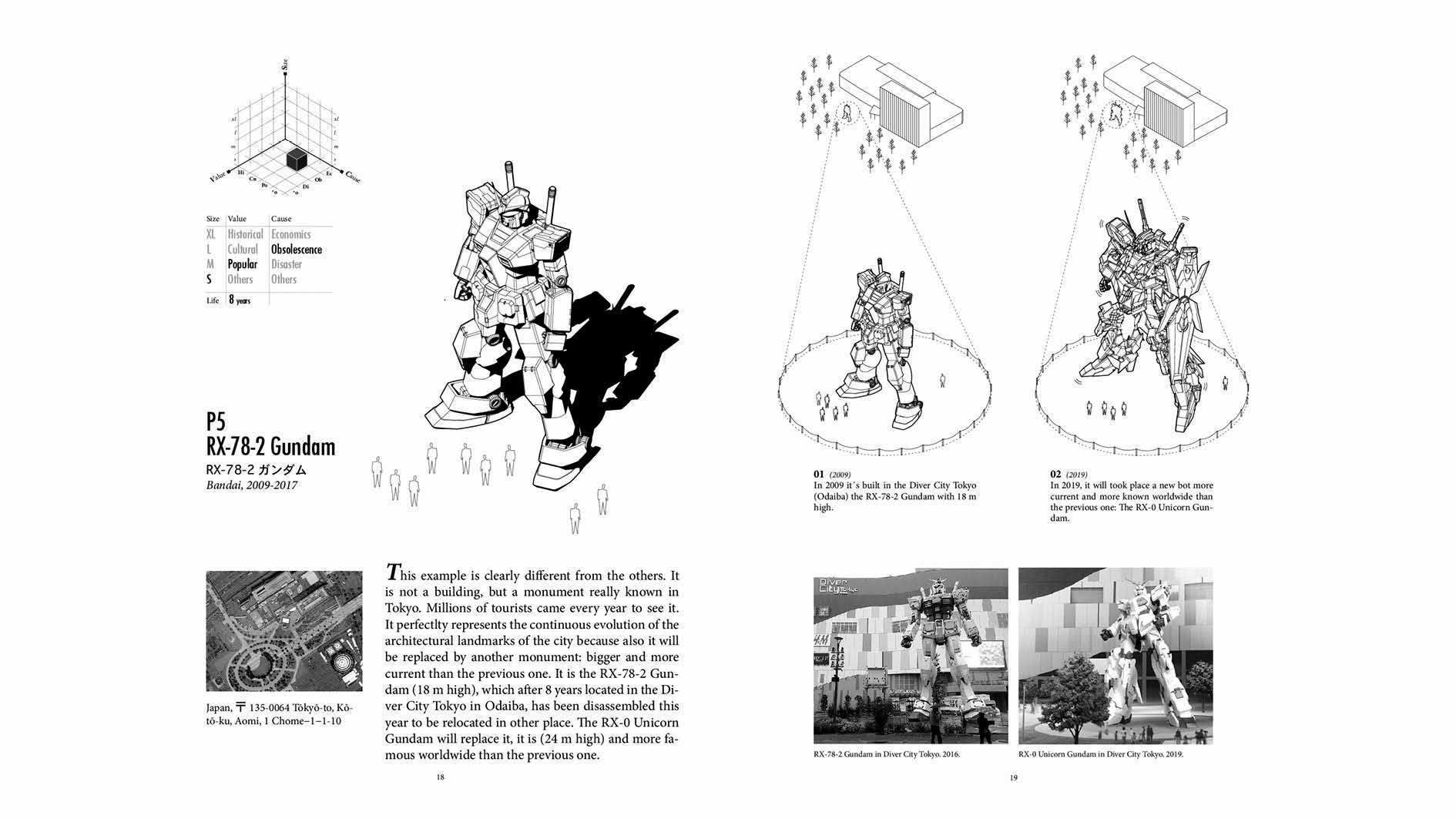Tokyo Iconic Metabolizing
Tokyo, JP
2017
The project is motivated by the observation that in Tokyo, "what doesn’t work is not fixed; it is replaced," resulting in the constant upgrading of older buildings, symbols, and landmarks. The research aims to comprehend and visually represent the continuous flows of material and metabolic exchange within the city. It examines 20 case studies where iconic buildings have undergone various processes of replacement and transformation since the mid-20th century. In Tokyo, residential houses typically have an average lifespan of 26 years. This suggests that a significant portion of the city's buildings erected three decades ago no longer exist in their original shape. Two key factors drive the city's constant replacement. Firstly, Tokyo's urban fabric is composed of millions of isolated structures spaced one meter apart to prevent earthquakes, making it easy to replace. Secondly, buildings in Tokyo do not strive for a homogeneous identity but a radical heterogeneity in terms of size, style, and materiality. This characteristic stands in contrast to Western urban culture, where buildings often contribute to a cohesive and historical image of the city. But even if the image of the city is not exactly the same, Tokyo is still being Tokyo.
Author & Editor:
Manuel Bouzas
Supervisor:
Yoshiharu Tsukamoto
(Atelier Bow-Wow)
Tsukamoto Lab
Program:
SERP, Summer Exchange Research Program
Sponsor:
Universidad Politécnica de Madrid
Dimensions:
108 pages, 21x15 cm
